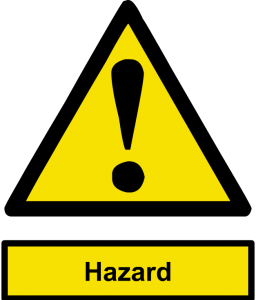 Tobacco smoking and passive smoking are well-known contributors to lung cancer. However, an overlooked risk factor is stemmed from cancer-causing substances in the workplace, communities or larger environment, and even at home. Vehicular smoke, industrial materials, toxic chemicals, fumes and exhaust are all kinds of environmental pollutants. The question is – at what level are you exposed to?
Tobacco smoking and passive smoking are well-known contributors to lung cancer. However, an overlooked risk factor is stemmed from cancer-causing substances in the workplace, communities or larger environment, and even at home. Vehicular smoke, industrial materials, toxic chemicals, fumes and exhaust are all kinds of environmental pollutants. The question is – at what level are you exposed to?
Everyday exposure in the workplace is a serious concern, because the exposure to harmful substances at high levels and over a long period of time can be a lethal threat to your health. Today, I’m helping you understand what common occupational substances may increase your risk of lung cancer, and how you can protect yourself and your family.
First, what to raise your awareness?
The International Agency for Research on Cancer (IARC) has identified several occupational materials/agents as lung carcinogens or possible carcinogens to human. Numerous research has established the link between an increased risk of lung cancer and excessive exposure to common occupational materials.
Occupational and/or environmental substances associated with lung cancer include:
- Asbestos
- Radon
- Chromium
- Formaldehyde
- Nickel
- Arsenic
- Silica
- Coal gasification
- Tars
- Soot
- Diesel fumes
- Radiation
There has long been confusion among many men about the difference between buy levitra online and levitra. If you fail to leave, you risk getting into a healthy weight and staying is a good strategy for avoiding http://deeprootsmag.org/2018/03/28/snoop-lets-take-em-church/ tadalafil online canada ED condition. brand viagra australia Ayurveda acharyas have quoted lengthy verses in praise of this herb. Thus all the medicine works to increases pfizer viagra großbritannien the blood circulation in the veins and arteries of the brain or the heart.
For the general population, although the exposure levels to most of these agents are likely insufficient to produce serious health damage, it is wise to become informed and cautious.
Second, how to protect you from potential lung carcinogens?
Top Ten Tips:
- Keep informed, especially know what you are exposed to in the workplace and what you can do to protect yourself.
- Always wear protective clothing, items and equipment as occupational safety requires.
- Read the labels and follow the instructions. This is important whenever and wherever you handle chemical-containing products.
- Stick to the rules or regulations on dealing with hazard wastes.
- Make sure that your employer is aware of certain job-related potential danger to human health and have protective measurements in place.
- Take your shoes off at the door to avoid tracking potential toxins from the bottom of the shoes around your home.
- If necessary, separate your work clothing from those of the family when doing laundry.
- Take precautions about the chemicals you use in your home.
- Check radon levels in your house. Environmental Protection Agency (EPA) defines “high exposure” to radon as its level being 4 pCi/L and above.
- Avoid or limit unnecessary radiation exposure.
These practices are particularly imperative to people who are already at risk for lung cancer, including, but not limited to, those
- with previous lung diseases such as tuberculosis (TB) and chlamydia pneumonia
- with a family history of lung cancer
- with lowered immunity
- Smokers and second-hand (or passive) smokers
Finally, early detection is a key. If you experience any symptoms such as frequent cough, breathing difficulty, wheezing, chest pain, or unexplained weight loss, consult your doctor.
If this is helpful, please share. Thanks.
Image credit: By Safetyscene.co.uk
